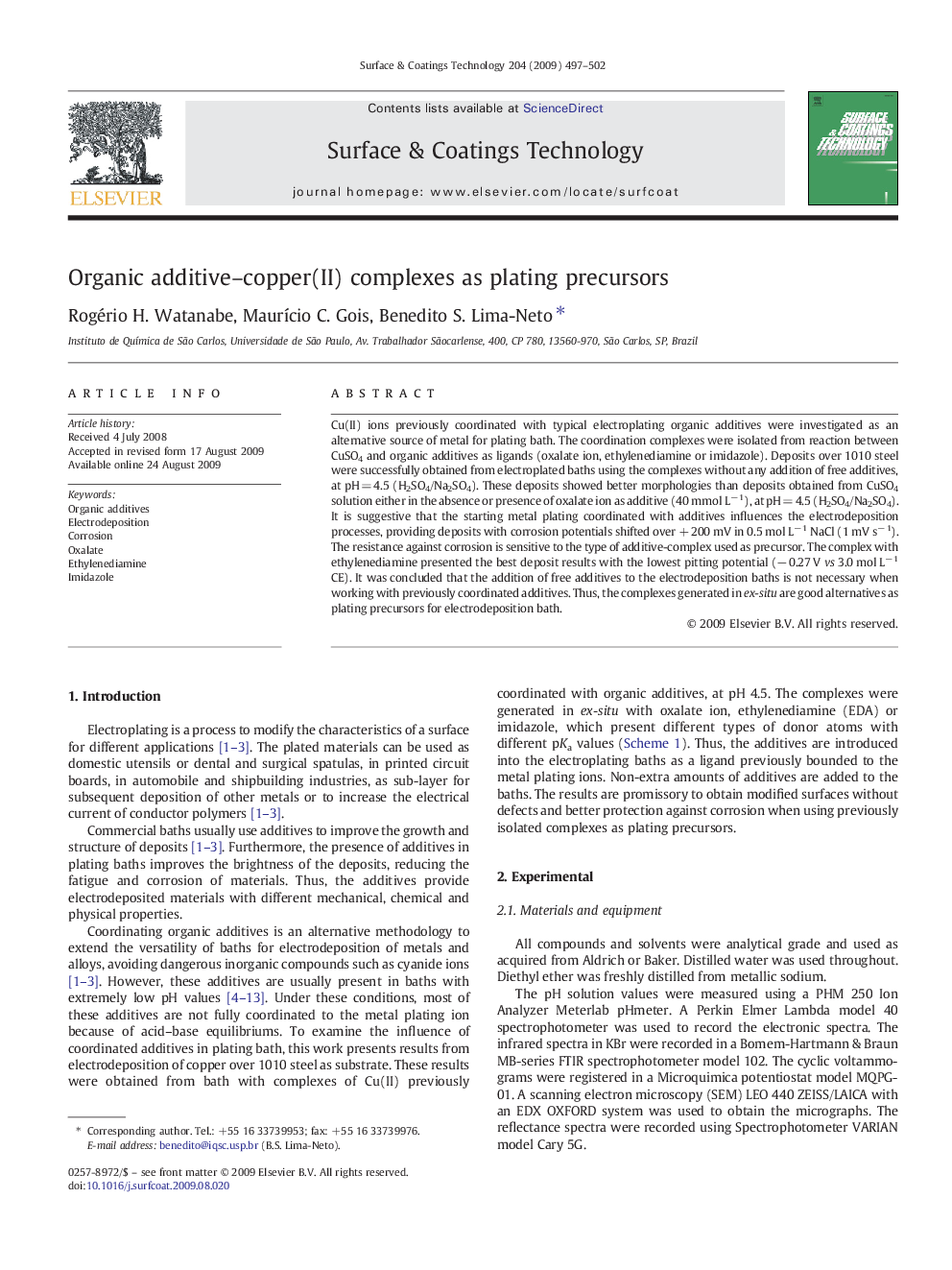| Article ID | Journal | Published Year | Pages | File Type |
|---|---|---|---|---|
| 1660560 | Surface and Coatings Technology | 2009 | 6 Pages |
Abstract
Cu(II) ions previously coordinated with typical electroplating organic additives were investigated as an alternative source of metal for plating bath. The coordination complexes were isolated from reaction between CuSO4 and organic additives as ligands (oxalate ion, ethylenediamine or imidazole). Deposits over 1010 steel were successfully obtained from electroplated baths using the complexes without any addition of free additives, at pH = 4.5 (H2SO4/Na2SO4). These deposits showed better morphologies than deposits obtained from CuSO4 solution either in the absence or presence of oxalate ion as additive (40 mmol Lâ 1), at pH = 4.5 (H2SO4/Na2SO4). It is suggestive that the starting metal plating coordinated with additives influences the electrodeposition processes, providing deposits with corrosion potentials shifted over + 200 mV in 0.5 mol Lâ 1 NaCl (1 mV sâ 1). The resistance against corrosion is sensitive to the type of additive-complex used as precursor. The complex with ethylenediamine presented the best deposit results with the lowest pitting potential (â 0.27 V vs 3.0 mol Lâ 1 CE). It was concluded that the addition of free additives to the electrodeposition baths is not necessary when working with previously coordinated additives. Thus, the complexes generated in ex-situ are good alternatives as plating precursors for electrodeposition bath.
Related Topics
Physical Sciences and Engineering
Materials Science
Nanotechnology
Authors
Rogério H. Watanabe, MaurÃcio C. Gois, Benedito S. Lima-Neto,
